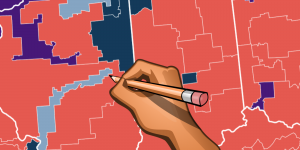Creating a moodboard is like curating your own mini gallery of inspiration. Whether you’re designing your dream wedding, redecorating a living room, or mapping out your next creative project, this visual tool is key for turning ideas into reality. But let’s be honest, not all moodboards are equal. The true magic lies in how practical and actionable yours will be. That’s why we’re here to show you how to put together a moodboard you can actually use.
Choose Your Theme Like a Pro
Every moodboard needs a strong theme to keep things cohesive. Think of your theme as the glue that binds all your ideas into one harmonious vision. Start by asking yourself what you’re trying to achieve or communicate. Are you dreaming of a “modern coastal vibe” for your bedroom? Or maybe you’re planning on going “vintage romance” for your wedding.
Once you lock in on a theme, use keywords and phrases to guide your search for images, colors, and elements that fit. This sharp focus will prevent your moodboard from spiraling into chaotic overload.
Gather Images That Speak to You
When collecting images, think beyond the obvious Pinterest boards. Sure, Pinterest is a treasure trove of ideas, but branching out will give your moodboard more nuance. Check magazines, Instagram feeds, photography books, or even nature for inspiration.
Don’t forget to look at the things you already know you connect with. Including iconic film jewelry that you find beautiful or nostalgic in your moodboard might seem unconventional, but it can bring an unexpected layer of depth. Those small, personal touches can make a world of difference when it comes to standing out.
Edit Ruthlessly
Editing is where good moodboards become great ones. Clinging to every pretty thing you come across will only muddy your vision. Decide what must stay and, just as importantly, what has to go. This is where being honest about your true favorites is essential.
For example, a key part of ensuring a stress-free wedding dress shopping experience is having a clear idea of what you do—and don’t—like. If your wedding moodboard is too busy, it can’t help you in the bridal shop. The process of cultivating a moodboard will sometimes lead you to throw in things that seemingly fit the theme or items you know are trendy, even if they don’t actually speak to you. Remember to only include the things that actually inspire you and align with the story you’re trying to tell.
Nail the Color Palette
A killer color palette creates unity across your moodboard. This doesn’t mean you should limit yourself to just one or two colors, but you should aim to stick to a palette that flows naturally. Tools like Canva or Adobe Color can help you build cohesive schemes that match your vision.
Look for recurring tones in your images—is there a lot of muted earthiness, or are you finding pops of bold neon? These clues will help you define the mood and keep your selections intentional. Everything on your board should feel like it belongs in the same room.
Arrange With Intention
Putting a moodboard together isn’t just about collecting random visuals; it’s about storytelling. The way you arrange your board matters as much as what’s on it. Instead of cluttering it with photos randomly, group elements purposefully. You might organize sections by texture, themes, or the sequence of your narrative.
Give your board breathing room so each piece can shine. If you’re going digital, apps and software like Milanote or Canva allow you to easily move elements around until everything clicks. If you’re working on physical boards, grab some scissors and tape and go wild.
Inspiration Made Useful
A well-made moodboard isn’t just pretty; it’s your roadmap to achieving the project of your dreams. When you put together a moodboard you can actually use, you’ll find yourself making creative decisions with confidence because you’ve visually laid the groundwork.






